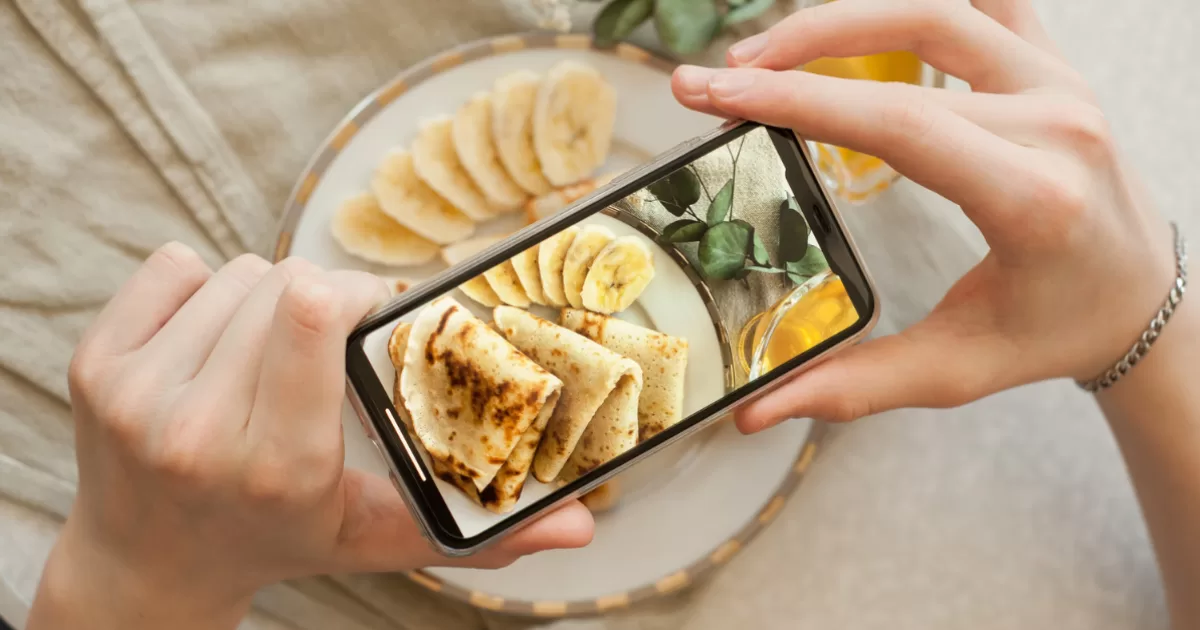If your brain immediately and internally screamed out the name of this yellow and porous fella—congratulations! You just made a strong case for using music in your own advertisements. Now we’ve always been all about music in TV advertising…
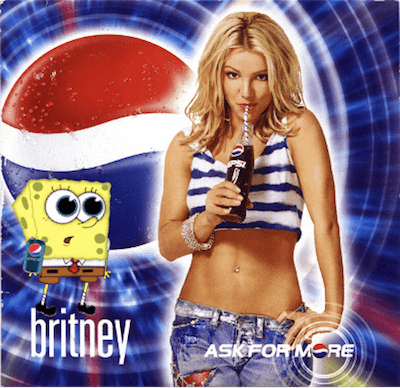
…but it is arguably one of the most underutilized strategies for online advertising. But you can’t just choose any music. There’s an art and science to it (and laws to follow!). So in this post, we’re going to cover everything you need to know to improve your ads with music, including:
- How music improves advertising performance (science!).
- Tips for using music in your online ads (emotions!).
- The plain-English rundown of music licensing terms (laws!).
- The pros and cons of a music licensing service (decisions!).
So let’s talk about music in marketing. Are ya ready kids?
The proven benefits of using music for advertising
Back in 1991 when Britney Spears was all the rage and Pepsi jumped on her success like Spongebob on a plate of Krabby Patties, we learned a bit about the consumer’s brain relating to music. The Association for Consumer Research conducted a study on the impact of music in ads on TV and found that music in an advertisement improved overall ad effectiveness in many ways, including:
- Higher purchase intent.
- Improved attitude towards the brand and the ad itself.
- Enhanced consumer persuasion and ad recall.
- Increased preference for the advertised product.
- Improved mental image memory of the product.
Why does music in advertising have such a strong impact?
Music’s impact on buying decisions has been studied for years, and the answer lies in the brain. Neuroscientists have analyzed the brain mechanisms related to memory, finding that words set to music are the easiest to remember. This is because music memory is stored in a few different parts of the brain.
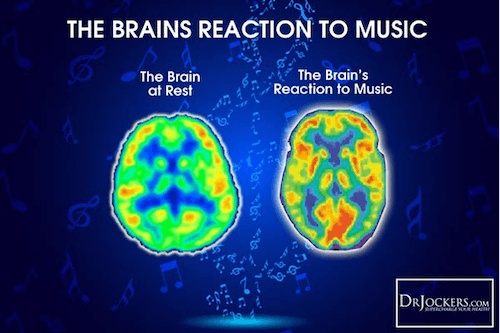
So music can increase ad recall, mood enhancement, and the likelihood of purchasing. And given the fact that on average, it takes eight touchpoints with your brand for a prospect to become a lead with online advertising this is huge.

But what about using music in ads online?
The results above are telling, but the study was done on TV ads. So, does music matter in the new age of online advertising? Absolutely. Consider these video marketing stats:
- Marketers who use video grow revenue 49% faster than non-video users.
- Among consumers, 70% purchased from a brand after seeing a branded video on social media..
- Instagram video ads receive 3x more engagement than image ads.
- Adding a video to your website can double the conversion rate.
- Social video generates 1200% more shares than text and image content combined.
And think about TikTok. Whether users are dancing to tracks or performing some random task, music is the common link with how users create engaging content.
The fact of the matter is, video marketing is a force to be reckoned with, and using music in your promo videos or video ads makes them that much more powerful. This creates a great opportunity for everyday marketers to get ahead of their competition by thinking a little outside the box with their ad strategies.
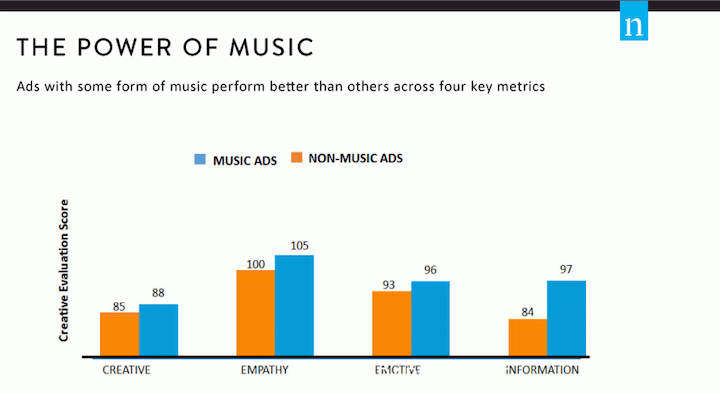
You just have to know how, where, and when to use it. And that’s what this guide is for. So let’s start with picking the right music for your ads.
How to pick the right music for ads
It’s not enough to randomly choose royalty-free background music for your ads. We’ve established that using the right song has the potential to make a positive impact on how consumers view your brand.
However, using the wrong music can cause an unwelcome distraction from your message. So here are some things to consider when choosing music for your ads:
- Brand: What is your brand’s personality? How does this music reflect your brand’s voice?
- Demographic: There is likely a correlation between your market and the type of music they listen to. Look at factors such as age, gender, and similar interests.
- Content: Is there a voiceover or is music the main focus? Do you want people to notice the music straight away?
- Message: What mood are you inspiring? What do you want the consumer to do? What emotions do you want them to feel?
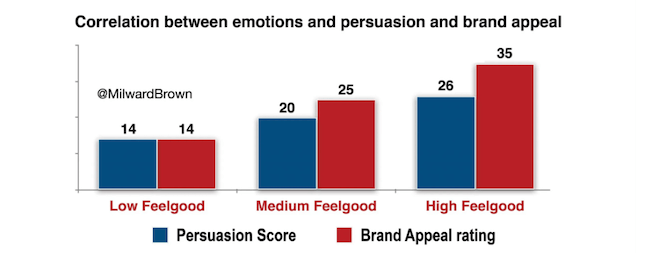
Tips for successfully using music in ads
Once you’ve found the right music, you’ll want to make sure your ads are reaching a music-friendly audience. Here are some tips on how to do that.
1. Focus on placements where users are more likely to have sound on:
While many Facebook users browse through their feed with the sound off, there are other social media platforms (and scenarios within Facebook) where sound is preferred, including:
- Facebook and Instagram Story ads
70% of Instagram users watch Stories on a daily basis, and one in four consumers have made a purchase after seeing a story on Instagram. - YouTube pre-roll ads
- Instagram Reels
- TikTok ads
- Spotify
2. Target audio-focused audiences
Think outside the box and find ways to reach sound-friendly audiences. For example,
- Market to a lookalike audience of users who have watched a high percentage of a previous video ad that was audio-focused.
- Consider partnering with an independent musician or influencer who has an audio-focused market and ask them to share your content.
- Ask your audience to vote on audio for your next ad or video.
3. Remind users to turn the sound on
Not everyone has their sound off because they’re out in public or don’t have headphones. Sometimes they just need to be prompted. Did you know that if a user taps the “sound on” sticker placed in an Instagram Story, it will automatically turn their audio on?
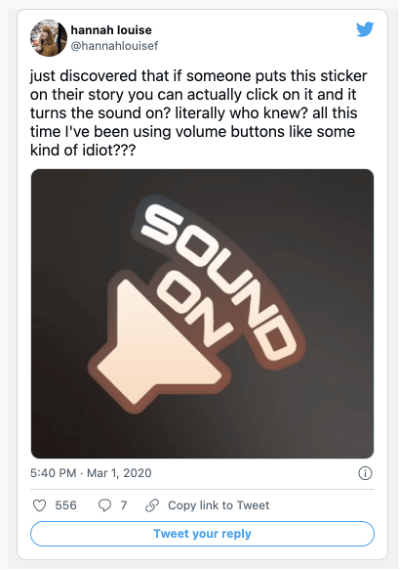
4. Test out different sounds
Be sure to split-test to make sure you’re getting the best results. Test out:
- Songs
- Sound effects
- Male vs female voiceovers. This is highly dependent on your market, but generally, female voices are preferred by most users!
5. Use captions regardless
If the sound in your ad is a voiceover, you’ll still want to use captions, of course. This is a given, since videos in Facebook and Instagram feeds are on mute by default. This is also a best practice for accessibility and inclusivity.
How to use music in ads legally: what is music licensing?
If 12-year-old Timmy uploads a YouTube video of his cat with Taylor Swift music playing in the background, the video may get flagged and monetized by T.Swift’s label.
And if a big company plays a Taylor Swift song in an ad to sell their product, well, she may sue you and write a song about it. (As someone who lives in Nashville, trust me, you don’t want a Taylor Swift song written about you).
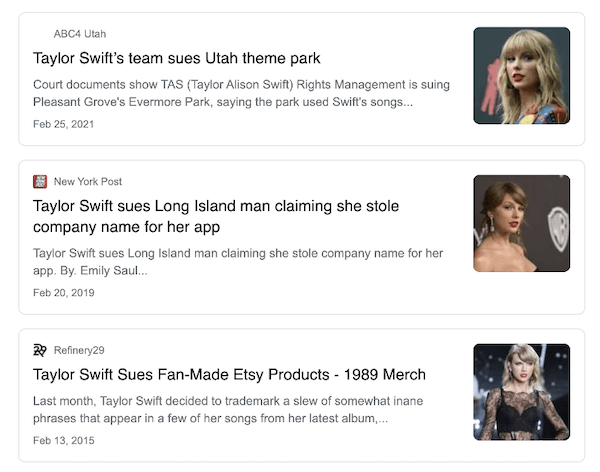
Bottom line: You REALLY need the legal all-clear to use music in your ads. This is where music licensing comes in.
Music licensing is the means by which a publisher, advertiser, or even another musician gets legal permission to use someone else’s music. Sounds simple, right? But there’s much more to it.
Terms and misconceptions to know about when using music in ads
So, what the heck is the law with music licensing and how does it work for marketers? Here are five terms to know:
1. Fair use
- Meaning: Fair use is “a legal doctrine that portions of copyrighted materials may be used without permission of the copyright owner provided the use is fair and reasonable, does not substantially impair the value of the materials, and does not curtail the profits reasonably expected by the owner.”
- Misconception: I want to use this song, it’s only fair. I’ll just use it.
- Reality: You can only play the song if you’re giving a commentary on the track. (This is a really gray area and you still might get sued, so talk to a lawyer first.)
2. Creative commons
- Meaning: Creative Commons is a nonprofit organization that makes digital media available for others to build upon legally and share.
- Misconception: The song exists, so as long as I credit the artist in my content, I can use it.
- Reality: An artist still has to grant permission for Creative Commons to be valid. Even still, there’s always fine print around how you can use the music, and sometimes fine print under the fine print. (Hint: Advertising is usually not allowed!)
3. Public domain
- Meaning: Public domain music is not protected by intellectual property laws such as copyright, trademark, or patents.
- Misconception: This song is old and falls under public domain, so I’ll use this track.
- Reality: While the original song may be under public domain, the track you’re using was recorded by an orchestra that owns the master license. You’re still gonna get sued — just not by the (possibly deceased) original artist.
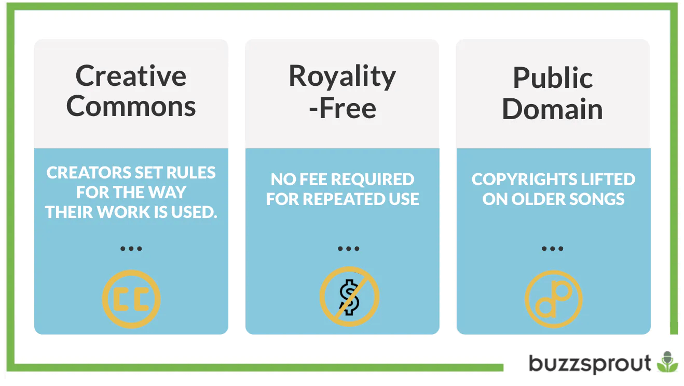
4. Royalty-free
- Meaning: Royalty-free music means the music is subject to copyright but does not require you to pay royalties (ongoing payments) or license fees.
- Misconception: This song is free for me to use.
- Reality: You don’t need to pay royalties on a per-use basis, but there may still be some fees involved to license and use the music.
Related: 11 Places to Find Royalty-Free Background Music
5. Copyright-free
- Meaning: This means the music is not protected by copyright.
- Misconception: This song has no copyright owner so I can just use it.
- Reality: A second party has acquired the right to use the work OR the copyright expired, but it still isn’t “free” for any use. (In fact, there’s really no such thing as free music because licensing is a confusing web of rules and regulations.)
What is a music licensing service?
As you can see, finding music for commercial use can be a headache. If you frequently use music in your marketing and advertising content, you may want to check out a music licensing company.
These are companies such as Soundstripe, Artlist, and Epidemic Sound with libraries of songs that you can legally use in your ads. Their terms and conditions are created specifically for this.
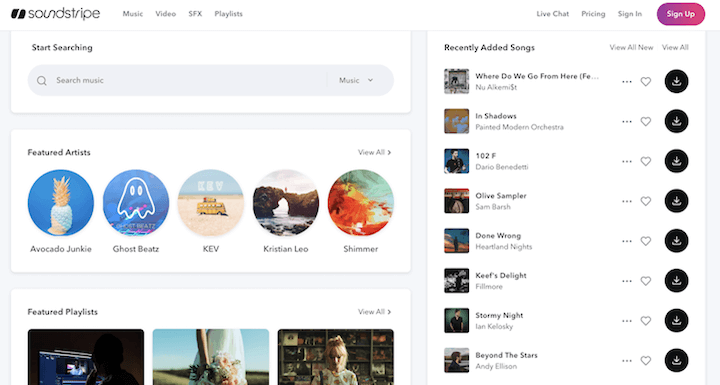
Music licensing service pros:
- You don’t have to have a law degree to license music.
- No one gets sued.
- It’s easy to find great music to enhance your ads.
- Pricing is relatively cheap (as low as $20/month).
Music licensing service cons:
- You can’t license Taylor Swift songs.
Music licensing service cautions
- Some — but definitely not all — companies have fine print around how you can use their music, so you still might need a lawyer to go through the details with you.
- Many companies require a subscription to license the music, and some are more expensive than others.
What to look for in a music licensing service
Even if pricing is relatively cheap, you’re still paying money. So it’s important to make sure whatever platform you invest in will get you the most bang for your buck. Here are some things to look for when vetting music licensing platforms:
- Additional content: Some services also provide stock video and sound effects.
- Original music: Some services—like Soundstripe—actually hire musicians to write music for ads.
- Quality of music: Some services actually have Grammy-winning artists and producers they work with.
- Tested music: Soundstripe, for example, actually tests music for conversion rates in its own ads.
- “Soundalike” songs: While you can’t license popular music you hear on the radio, there are “similar song” search tools that allow you to find tracks similar to the one you had in mind.
- Standardization: Every track is produced to the same specs, so you can easily transition from one to another.
- Selective features: You can download stems for every song, so you can choose to mute the vocalist, drums, guitar, etc.
Start using music in your video ads
At the end of the day, having music in your ad can yield some pretty significant results in your marketing efforts. You can expect to see more positivity around your brand, higher ad recall, and even more sales!
Go check out some royalty-free music playlists, and be sure to review some video marketing best practices before publishing your next video ad. Share your marketing results with Soundstripe for a shoutout and a chance to win a free year of music!


